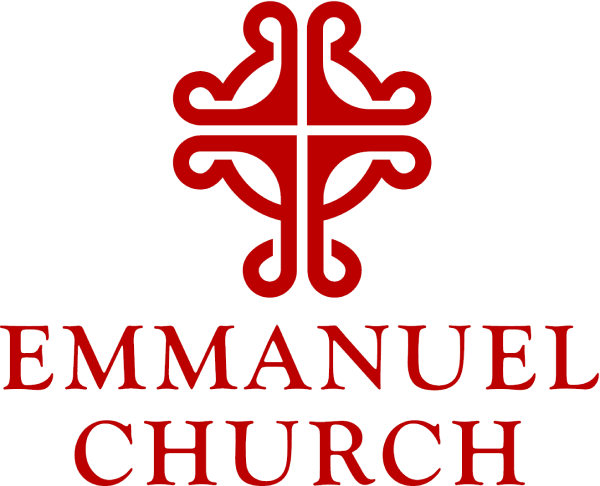
First Lobster
Our Christmas gospel reading tonight — and most of our common cultural memory of Jesus’ birth — comes from the nativity story in the Gospel of Luke. Luke’s gospel is the basis of most Christmas stories, movies, hymns, songs, and pageants. It’s Luke’s gospel that gives us the story we treasure, and that we’ve all grown up with — even if we didn’t always go to church.
We all know about Mary, Joseph, and the baby Jesus, laid in a manger. And we know about the cows, sheep, and donkey who were there with the holy family, right? And shepherds — we all know about the shepherds. And the magi come a little bit later, with their gifts for the new baby king. We’ll know to expect them in about six days or so, traveling on foot from afar, as we know they do.
At the church my family belonged to in Atlanta for over thirty years, after many Christmas seasons of elaborate Christmas pageants of great beauty and seemingly infinite preparation, we evolved into what we called the “No Stress Pageant.”
It was the Christmas story of Mary and Joseph, traveling to Bethlehem where Jesus was born, all as we know it — But it happened at the 5:00 family service on Christmas Eve. A team of moms and several “guardian angels” — these were choir members, robed up and fully qualified and licensed to heard cats OR 3-10 year olds — stood in the Narthex next to a box of blankets, lengths of rope, and scraps of fake fur, tying them onto littles as they came by — two by two in procession up to the altar. No rehearsals. No elaborate costumes, made by hand and fussed over for weeks.
The nativity story from Luke’s gospel was read as our deepest, tenderest childhood memories of the love born at Christmas came together around the manger on the chancel. The real beauty of the No Stress Pageant was that many of the children came pre-dressed, often in their Halloween costumes from the previous year, so there were princess angels, Ninja Turtles, holy unicorns, Superman or Spidey Joseph, and pirate shepherds around the manger. Once — because it’s life that imitates art and not the other way around, it seems to me — we even had a lobster, like Hugh Grant’s niece in everyone’s favorite Christmas movie, Love, Actually.
No Stress Pageant
Was the No Stress Pageant, and its unexpected assortment of creatures at Jesus’ birth a crazy modern adaptation of our holy story? I’m not sure that this wholly radical inclusion of all sorts among the witnesses to the holy miracle isn’t exactly the point that Luke’s gospel is making, once we really take a look at what it says.
Luke’s gospel tells the story of Joseph and Mary — at that time surely awkwardly pregnant with the baby Jesus — traveling to Bethlehem to be counted for the census. Luke’s gospel tells us that Mary laid the new baby king in the manger, because there was no room for them at the inn. And it’s from the idea of the manger — a food trough for animals — that we start to fill in the details of the story in our imaginations, and in our cultural and theological memory.
You know those parts: That Mary, heavily pregnant, would surely have had a donkey to ride on, as these days Bethlehem is a two-hour drive from Nazareth, so Nazareth to Bethlehem would have been a walk of several days in the first century. AND — That, if Mary laid baby Jesus in a manger, there must surely have been cows and other livestock nearby that food dish, looking on with interest at the unfamiliar occupant of their dinner bowl. And that because there were shepherds tending their sheep in the fields when they saw a multitude of angels and went to see the baby, their sheep must have walked along with them, and then into the barn, also gathering around where Jesus lay.
Cultural References
And we use our own cultural references — what we know from our own experience — once we populate the manger scene this way — all coming from Luke’s gospel’s mention of the manger, the food dish for livestock. Because we all know that Jesus was born in a stable in a barn, right? OR DO WE?? Hold that thought.
Let’s start with a question: How is it that we find ourselves in this place — in Bethlehem — for Jesus’ birth as it’s told in the Gospel of Luke? The Angel Gabriel didn’t list traveling to Bethlehem among the instructions for this God-bearing Mary agreed to. And Bethlehem is not Mary’s hometown. Instead, the birth narrative in Luke’s gospel starts from the constraints of empire. Joseph, we are told, is descended from Bethlehem, the House of David.
Joseph is betrothed to Mary, and their betrothal, and the Roman legal system required that they both report to Joseph’s home town to be registered because that is Joseph’s ancestral home. That has nothing more to do with Mary, or her miracle pregnancy, than Joseph himself does. Whether this governmental registration is for tax purposes, military defense, or immigration controls the gospel does not tell us. But it’s really unlikely that Mary and Joseph are being counted to be sure that they have fair representation and a political voice in the Roman Empire.
In Luke’s gospel, God upends all of this. God surprises Mary, Joseph, and probably most of all, Emperor Augustus, by fulfilling God’s purposes with the birth of God’s son in Bethlehem, of all places. In Bethlehem, the local government where Joseph owed a duty to the Roman Empire, and where Mary therefore owed a derivative duty as his betrothed, God totally disrupts that Roman chain of command. It’s certainly not the Roman Emperor or the Roman governor who comes to greet the new baby Jesus. Instead, an angel of the Lord gets the word out to the shepherds — out in the fields, and not inside city limits and Rome’s political subdivision of Bethlehem. In fact, if shepherds had any place at all in the civic structure of Bethlehem, they’re basically the Hell’s Angels of the first century.
And now that we’ve mentioned angels, they showed up too, also separate and apart from the social structure of Bethlehem. It was a LOT of angels — a multitude. We don’t get an exact number in the gospel, but surely a thousand angels at least — show up to praise God and worship. God has inverted the power paradigm — reversed the power structures of Rome right in its own jurisdiction and under Rome’s nose — and it’s a long time before the empire even figures it out.
After seeing this, the shepherds confer among themselves, and then they also head in to Bethlehem to welcome the baby Jesus. And then an army of God’s representatives shows up inside Bethlehem, inside all the trappings of the Roman empire’s temporal jurisdiction.
So is it really that crazy to imagine those who are drawn to the manger — turned toward Bethlehem — include pirate shepherds, lobsters, and unicorns? Those who were drawn to the manger were not exactly on the Ancient Near East A-list. They wouldn’t have been invited to the best parties by the Roman emperor. They came, they were drawn, to Bethlehem, to the humble crib side of a new born baby. This was the ultimate inversion of power.
And remember the shepherds — when they left? They were still worshiping the new baby king, and they told all the others that everyone was welcome to this party — this baby shower for God born in human skin as a humble baby.
What is Worship?
And what is worship? It’s one of those words that can be a little hard to hold onto. And it can seem like it’s about specific actions we’ve been taught by our parents and Sunday School teachers — bowing, kneeling, crossing yourself, knowing by heart the responses to the prayers. But it’s been helpful to me to think about the word in a different way — not as worship, but about worth-ship — about turning toward, walking toward, always traveling toward, that which is of ultimate worth.
And tonight, as we all look East toward the star of Bethlehem, we turn toward that which is of ultimate worth. The new baby king — God come to us in human skin, and not set on a throne, but laid in a manger.
I gave you a footnote — a hold that thought — a few minutes ago. And tonight we’ve been talking about context — the details that are not in our gospel account of the story, but that we fill in from inference, or from our own experience. Like if Jesus was laid in a manger, and if it was a really long walk from Nazareth to Bethlehem, there must have been a donkey. And other livestock. And if there were livestock, Jesus must have been born in a stable in a barn.
This is where the context of the Holy Land can help us. As it turns out, I just want to share with you — the Holy Land is a really rocky place. There are many caves, and caves have provided refuge to people in the Holy Land for thousands of years — since the beginning of civilization there.
In the Church of the Nativity in Bethlehem, the church commissioned and built in the fourth century by the Emperor Constantine and his mother, Helena, to remember and honor the place of Jesus’ birth, there is a cave — a grotto, where the church has remembered from the first century on that Jesus was born. Caves were places to shelter people and their livestock, which represented families’ whole wealth and existence — their very most precious possessions.
So when there was no room at the inn, Mary and Joseph were taken into the home, the warmest, safest, most nurtured and protected place in that environment — right into the heart of the family. That’s where Jesus was born in Bethlehem. Let’s gather there — the whole unlikely lot of us.
Let’s turn toward, lean toward the prince of peace and the light of the world, following the star, and lay down our biggest hopes and our wildest, holiest dreams — the very, very best of us — down next to the baby king in the manger. Amen
